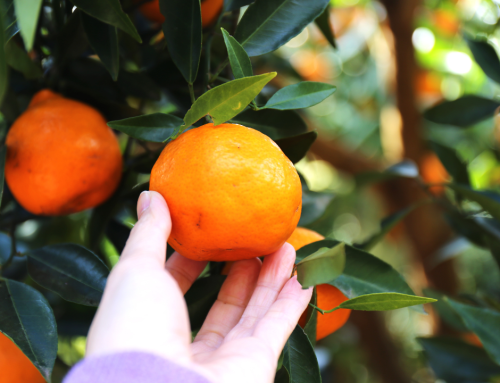Take action now to protect against fruit fly
Home gardeners are encouraged to act now so future crops in their garden or yard, and commercial crops are safe from fruit flies. Queensland Fruit Fly (QFF) populations are currently being trapped and recorded in urban areas. Home gardeners should take some simple steps to help protect against the spread of the pest.
Reoccurring trouble spots
If you or your neighbours had fruit fly problems in your garden last year that were not controlled, you are likely to have them again this season.
Monitor for fruit fly
You can monitor for the presence of QFF using traps and eyesight. Most traps catch male QFF, however some will catch females. You can also monitor by checking ripening fruit for fruit fl y sting marks. Don’t forget to check and monitor your front yard too if it contains fruiting plants. Keep an eye out for fruiting plants near your house, on roadsides, channel banks, Council and Crown land, untended properties and business sites. You may have to talk with your Council or your local Fruit Fly Co-ordinator to let them know about host plants.
Remove ripening fruit
Simply put — if fruit flies do not have fruit to lay into, they will die out eventually. After removal, fruit must be handled and destroyed properly so that fl y larvae can’t escape into the soil. Compost heaps are not a good place to destroy fruit as conditions on and around them are suitable for QFF survival.
Tree removal
If you have a fruit tree you are unable to manage or no longer want, contact your participating Council for more information about the free Fruit Tree Removal Program.
Baiting
Baits attract and kill fruit flies with food-based attractants and toxicants. There are several commercial products available for this strategy. Baiting works best in the home garden if it is practiced by all neighbours and is most effective when applied weekly (and more often if it rains).
Netting
Netting is a highly effective fruit fly control strategy for the home garden if you want to keep your fruit and fruit fl y susceptible vegetables (such as tomatoes, chillies, eggplants, capsicum, rockmelons, honeydews). Because many fruiting plants need bees, moths or wind to pollinate them to allow fruit to set, netting should be applied after fruit set. There are different types and sizes of fruit fly netting.
Restricted use of pesticides
There are very few pesticides with Federal Government approval for use in home gardens and those that are approved are difficult to obtain. Your garden produce or hardware store can provide further advice about the various products to help control and manage fruit fly.




